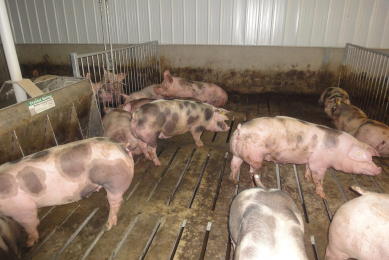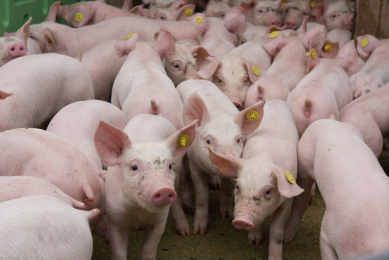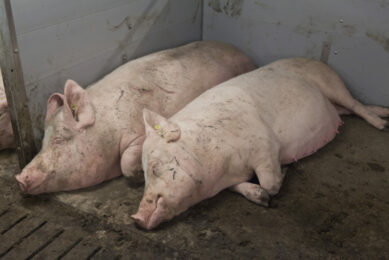Curtains – quartiling the building
Motorised curtains are an increasingly popular way of naturally-ventilating piggeries in hot climates – those that are not exposed to strong winds in winter.
Motorised curtains are an increasingly popular way of naturally-ventilating piggeries in hot climates – those that are not exposed to strong winds in winter.
I see many in my travels. If the building is ‘squat’ – that is fairly short and wide, then just one curtain down each side of the building is satisfactory. A barn of, say, 35 to 40 metres in length and about 18 to 20 metres wide.
But I see many which are much longer than this, but little wider, still with just one curtain running all the way down the sides which may be 50 to even 100 metres long. Pigs in such buildings will have a much wider temperature gradient with just one long curtain per side. It is better to ‘quartile’ such long barns by having two motorised curtains on each side, with the ground plan thus divided into four quarters.
Why?
The sun crosses the sky from dawn till dusk across an arc of about 180Ëš. This means that different portions of the building will receive different heat intensities as the sun moves across the sky during the day. Also the wind can blow from different directions in the course of one day (or night). Having four curtains driven by four motors linked to four sensors in the four quarters of the ground plan – all linked to an overall temperature controller – provides a more stable and less variable environment.
I have measured the temperature gradients between a single curtain per side building and one of exactly the same design and orientation which had been quartiled. The two curtain shed gave a typical temperature gradient in cold weather ranging from 14ËšC to 9ËšC while the quartiled one ranged from 14ËšC to 11ËšC. This meant that 74% of the pigs were in the warmer sector of the four-curtain shed during the periods measured while only 18% in the two-curtain shed were.
Improvement
In terms of results, the quartiled pigs showed an improvement of 0.2 feed conversion rate (6.25%) and reached slaughter eight days sooner in winter. The payback on the extra cost was ten months -say two winters discounting any summer advantage.
In fact in hot weather there were 12% dirty pens in the quartiled buildings and 32% in the two-curtain version – this at a 29.3ËšC maximum daytime temperature. I find wrong-mucking tends to be a disadvantage to any form of curtained ventilation, but this is lessened by spraying and stopped altogether by installing an airbag distribution system.
The temperature gradients mentioned above are drawn out as per ground plan in my textbook ‘Pig Production Problems – A Guide to their Solutions’, pages 324-327.











